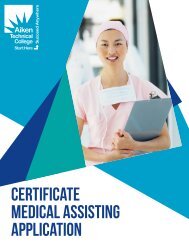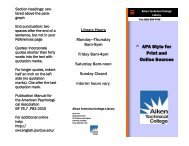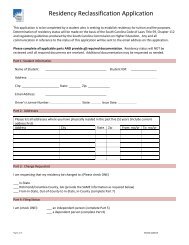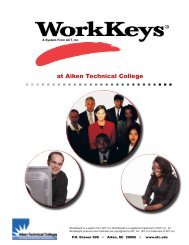2009 Accountability Report - Aiken Technical College
2009 Accountability Report - Aiken Technical College
2009 Accountability Report - Aiken Technical College
Create successful ePaper yourself
Turn your PDF publications into a flip-book with our unique Google optimized e-Paper software.
44<br />
The development and implementation of several electronic systems are a direct result of student concerns for<br />
more communication and better services. The <strong>College</strong> implemented the “My ATC” system to provide<br />
electronic communication to all students in a timely manner. Access to student profile information has been<br />
available since the implementation of the Web Advisor system. Students also have the opportunity to register<br />
themselves into classes on-line.<br />
III.6.4. How do you incorporate organizational knowledge, new technology, cost controls, and other<br />
efficiency and effectiveness factors, such as cycle time, into process design and delivery<br />
ATC monitors class size, faculty load, program enrollment, and budget expenditures to monitor efficiency and<br />
effectiveness in processes and delivery of services. To reduce inefficiencies, job redesign and departmental<br />
restructuring is reviewed as in the recent realignments in Academic Affairs and the Workforce and Business<br />
Development Division.<br />
ATC regularly reviews benchmarks and implements new technology to improve cycle time in student and<br />
administrative processes. For example, the <strong>College</strong> has implemented several online applications. Hybrid<br />
courses permit students to do the majority of coursework online. The <strong>College</strong> recently implemented a number of<br />
electronic systems to further improve efficiency and effectiveness in campus communication. “My ATC”<br />
provides electronic communication to all students in a timely manner. Web Advisor provides access to student<br />
profile information. Students who may be under-achieving in a class are warned through the campus’ ‘early<br />
alert’ system that they must improve their course grades.<br />
Students have been able to register for classes online and utilize online payment via credit card since Spring<br />
2007, which greatly streamlined the registration process. Additionally, the <strong>College</strong> has recently undertaken a<br />
thorough review of its enrollment management process. Strategies have been developed to increase market<br />
share, review flexible delivery systems and program mix, enhance enrollment driven alliances, provide<br />
customer-centered service and communication and sharpen, strengthen and communicate the <strong>College</strong>’s image.<br />
Organizational leadership for the department has been enhanced with the hiring of a dean and additional staff<br />
positions have been created to focus on communications and data management.<br />
III.6.5. How do you systematically evaluate and improve your learning-centered processes<br />
The <strong>College</strong> has developed and implemented an internal Institutional Effectiveness Program centered on six<br />
“Critical Success Factors” that are supported by appropriate “Core Success Indicators.” Each CSI includes a<br />
definition, method of measurement, standard, data source(s), and assignment of primary responsibility.<br />
Standards have been established for each CSI based in part on historical performance and primarily on a<br />
commitment by the <strong>College</strong> to achieve and sustain levels of performance that move the <strong>College</strong> toward<br />
excellence in all of its operations. The 16 core success indicators represent an internally developed and<br />
approved institutional effectiveness “report card” and are used in the strategic planning cycle.



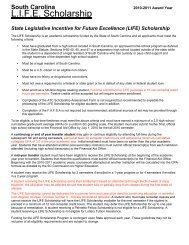
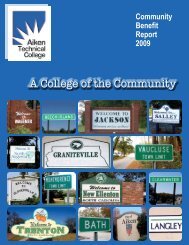
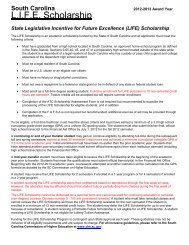
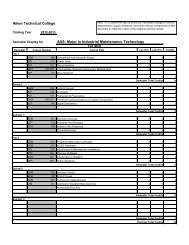

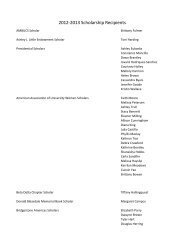
![MLA PowerPoint presentation [PDF] - Aiken Technical College](https://img.yumpu.com/36398339/1/190x143/mla-powerpoint-presentation-pdf-aiken-technical-college.jpg?quality=85)
